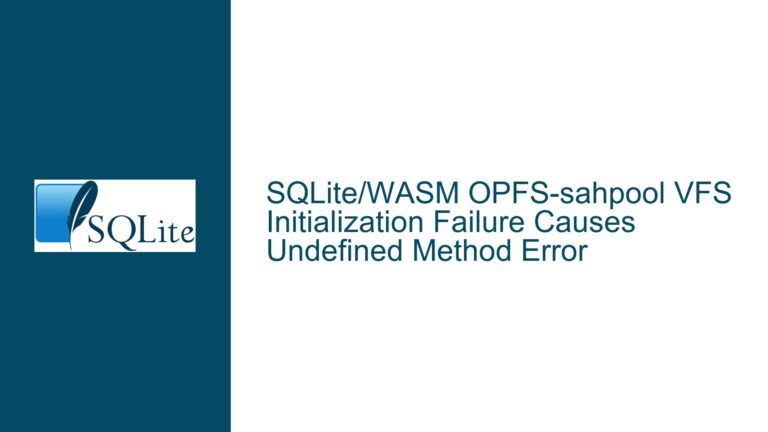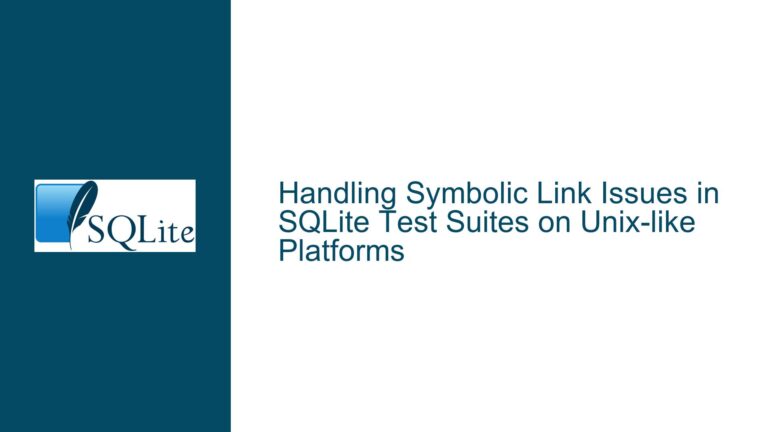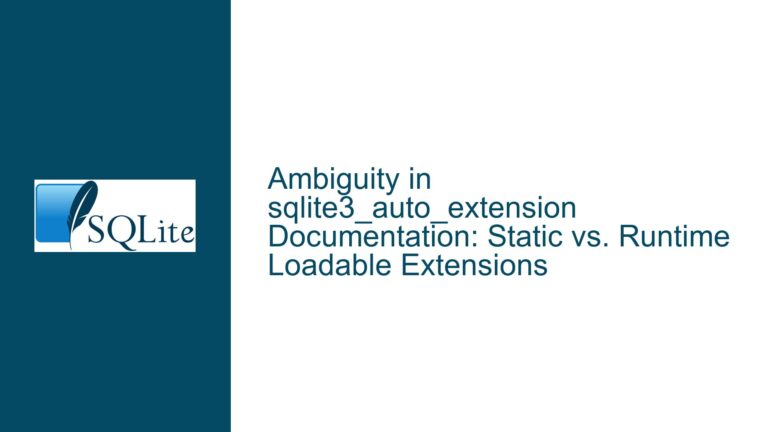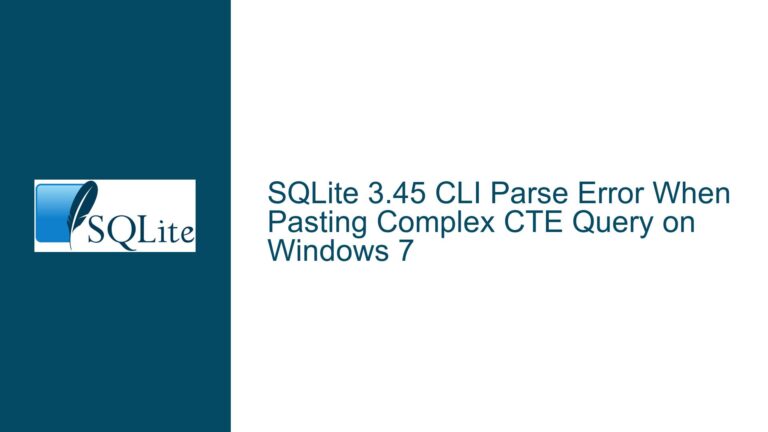SQLite Configuration and URI Enablement in Pre-Compiled Binaries
Issue Overview: SQLite Configuration and URI Enablement in Pre-Compiled Binaries
SQLite is a widely-used, lightweight, and embedded relational database management system. One of its strengths lies in its configurability, allowing developers to tailor its behavior to specific use cases. However, this flexibility can also lead to confusion, especially when dealing with pre-compiled binaries and their default configurations. A common point of confusion is the enablement of certain features, such as the SQLITE_CONFIG_URI option, which allows SQLite to handle database file paths as Uniform Resource Identifiers (URIs). This feature is particularly useful for advanced use cases, such as opening databases with specific modes or configurations directly from the URI.
The core issue revolves around determining which options are enabled by default in pre-compiled SQLite binaries, specifically for Windows, and how to programmatically enumerate these options. Additionally, there is a need to understand the differences in configuration between the SQLite Command-Line Interface (CLI) and the pre-compiled library (DLL). The discussion highlights that while some features, like URI handling, are enabled in the CLI, they may not be enabled in the pre-compiled library, leading to potential inconsistencies and confusion for developers relying on these binaries.
Possible Causes: Why URI Enablement and Configuration Differences Exist
The differences in configuration between the SQLite CLI and the pre-compiled library stem from the build process and the intended use cases for each binary. The CLI is designed to be a versatile tool for interactive use and scripting, often requiring a broader set of features enabled by default. On the other hand, the pre-compiled library is typically used as a component within larger applications, where the developer may prefer to enable only the necessary features to reduce the binary size and potential attack surface.
One of the primary reasons for these differences is the use of compile-time options, which determine which features are included in the binary. For example, the USE_URI option controls whether URI handling is enabled. If this option is not set during compilation, the resulting binary will not support URI-based database file paths. This is why the SQLITE_CONFIG_URI option does not appear in the list of compile options for the pre-compiled library, as observed in the discussion.
Another factor contributing to the confusion is the lack of comprehensive documentation detailing the specific options enabled in the pre-compiled binaries. While the SQLite documentation provides extensive information on compile-time options and their effects, it does not explicitly list the default configurations for the pre-compiled binaries. This omission can lead to uncertainty, especially for developers who rely on these binaries and need to know which features are available out of the box.
Troubleshooting Steps, Solutions & Fixes: Ensuring URI Enablement and Consistent Configuration
To address the issues related to SQLite configuration and URI enablement, developers can follow a series of steps to ensure that their applications have the necessary features enabled and that they are aware of any differences between the CLI and the pre-compiled library.
Step 1: Verify Compile-Time Options
The first step is to verify the compile-time options that are enabled in the SQLite binary being used. This can be done using the PRAGMA compile_options; command, which returns a list of options that were set during the compilation of the SQLite library. As seen in the discussion, this list does not include the USE_URI option, indicating that URI handling is not enabled by default in the pre-compiled library.
Developers should run this command on both the CLI and the pre-compiled library to identify any differences in the enabled options. This will help them understand which features are available in each binary and plan accordingly.
Step 2: Custom Builds for Specific Requirements
If the pre-compiled binaries do not meet the application’s requirements, developers should consider building SQLite from source with the desired options enabled. This approach provides full control over the configuration and ensures that all necessary features are available.
To build SQLite from source, developers need to download the source code from the official SQLite website and compile it using their preferred toolchain. During the build process, they can specify the desired compile-time options, such as USE_URI, to enable URI handling. This step requires some familiarity with the build process and the specific options available, but it is a powerful way to tailor SQLite to the application’s needs.
Step 3: Programmatic Enumeration of Enabled Options
For applications that need to programmatically determine which options are enabled, SQLite provides the sqlite3_compileoption_get and sqlite3_compileoption_used functions. These functions allow developers to query the compile-time options at runtime and make decisions based on the available features.
For example, to check if URI handling is enabled, developers can use the following code snippet:
#include <sqlite3.h>
#include <stdio.h>
int main() {
if (sqlite3_compileoption_used("USE_URI")) {
printf("URI handling is enabled.\n");
} else {
printf("URI handling is not enabled.\n");
}
return 0;
}
This code checks if the USE_URI option was used during compilation and prints the result. Similar checks can be performed for other options as needed.
Step 4: Handling Differences Between CLI and Library
To handle the differences between the CLI and the pre-compiled library, developers should be aware of the specific features they rely on and ensure that these features are consistently enabled across all environments. If a feature is enabled in the CLI but not in the library, developers may need to adjust their application’s behavior or provide alternative implementations.
For example, if URI handling is required but not enabled in the pre-compiled library, developers can either build a custom version of the library with URI handling enabled or modify their application to use traditional file paths instead of URIs. In some cases, it may be possible to enable certain features at runtime using the sqlite3_config function, but this is not always feasible for all options.
Step 5: Documentation and Community Resources
Finally, developers should consult the official SQLite documentation and community resources to stay informed about the latest changes and best practices. The SQLite website provides detailed information on compile-time options, configuration, and usage, which can help developers make informed decisions.
Additionally, the SQLite forum is a valuable resource for troubleshooting and discussing specific issues. By participating in the community, developers can gain insights from others who have faced similar challenges and learn about potential workarounds or solutions.
Conclusion
Understanding and managing SQLite configuration, particularly the enablement of features like URI handling, is crucial for developers working with pre-compiled binaries. By verifying compile-time options, building custom versions of SQLite when necessary, and using programmatic methods to enumerate enabled options, developers can ensure that their applications have the necessary features and behave consistently across different environments. Additionally, staying informed through documentation and community resources can help developers navigate the complexities of SQLite configuration and make the most of this powerful database engine.






